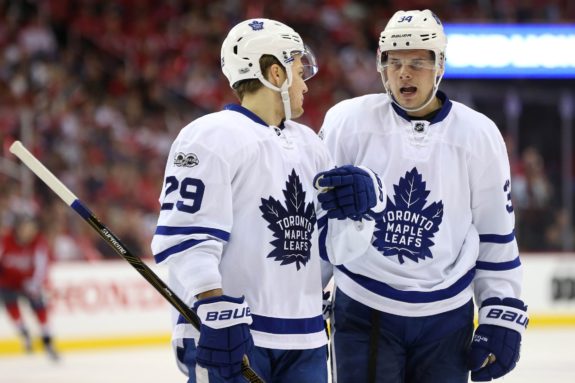The weeks leading up to and on the first day of the 2017 NHL’s free agency period have unveiled a lot about the direction the league is heading. When it comes to building and sustaining teams in a salary cap era, players and general managers alike are demonstrating what’s most important to them.
And it’s not the money.
The salary cap forces clubs to trade some of their top players because eventually, they become unaffordable. For years, teams would negotiate the terms of contracts with players, one of which included the length of the contract, and that would help them keep their costs down. Players were signing contracts up to 15 years and this provided short-term benefits to the team and long-term benefits to the player.
It was a relatively happy middle ground but in 2013, the Collective Bargaining Agreement (CBA) changed and the NHL placed a limit on the length of contracts. Now, players can re-sign up to eight years with their current team or sign with a different team for seven. Previously, there had been no limit on length, with the exception of entry-level contracts.
The CBA’s Ripple Effects
For guys contractually bound to teams with no foreseeable future of winning a Stanley Cup, the new limitations placed on contract length has given them more options to attain what they really want; a shot at winning the Stanley Cup and perhaps another one after that.

This was the case for Marián Gáborík who was acquired by the Los Angeles Kings in March 2014. He was 32 years old at the time and was playing in his final year of a five-year deal he originally signed with the New York Rangers in 2009. He played in 19 regular season games with the Kings before their playoff run, where he scored 22 points in 26 playoff games to finally win his first Stanley Cup.
Gáborík played a huge role in the Kings’ second Stanley Cup championship and when June came around, his contract was extended by seven years for $34.125 million. Gáborík said he might have been able to get more money elsewhere but it wasn’t about the money. He just wanted to stay with a great team.
Over the past four years, we’ve seen players turn down money so they can play with a contending team . This is what Kevin Shattenkirk said about his recent signing with the Rangers, who signed him to a four-year deal worth $26.6 million. Other teams had offered him more than $30 million for seven years but Shattenkirk chose to pursue his lifelong dream in New York.
NHL Salary Cap & Offer Sheets
This is the trend for players nearing the end of their careers and the limit on contract length allows them to do so. For guys beginning their careers though, there’s another trend which also includes the foregoing of more money but under different motivations.
For Connor McDavid, who recently signed the largest contract in NHL history, an eight-year deal worth $12.5 million per year, he wanted to help his team build a strong core. According to TSN’s Bob McKenzie, the original deal was expected to be worth $13.25 million per year, and the Edmonton Oilers’ general manager Peter Chiarelli said the term could have been shorter too.

High-calibre players who go on to sign big-money contracts such as the one McDavid signed could be responsible for starting yet another trend. That is the trend of the offer sheet. Teams who fare poorly for seasons on end start collecting first-round picks. This was the case for the Oilers, who accumulated eight first-round picks between the 2009 and 2016 Drafts, four of which were No. 1. Although the odds of getting the first overall pick in this day and age have decreased significantly, it’s still possible.
Under the current salary cap, if some of these picks weren’t traded away, it’d simply be impossible to pay them all their market value and as a result, conditions for offer sheets begin to form. In fact, Chiarelli recently told the Oilers’ website they would match any offer sheet Leon Draisaitl receives.
He wouldn’t have said this if it wasn’t a real concern and McDavid wouldn’t have taken a smaller contract for no reason. Whether or not he left money on the table is irrelevant, the whole thing was a defensive move to combat potential offer sheets and adhere to salary cap stipulations.
Maple Leafs May Find a Similar Situation
Now questions are rising around the potential effect this situation could have on the rest of the league. The Toronto Maple Leafs could find themselves in a very similar situation in the next couple of years, as they have six first-round picks signed to entry-level contracts, plus another on the way when they sign Timothy Liljegren, a first-round defenseman from the 2017 Draft. Will they be able to keep Auston Matthews, William Nylander, Mitch Marner and Kasperi Kapanen long enough to win a Stanley Cup?

If teams cannot find a happy medium between themselves and players, offer sheets could become more prevalent, regardless of how much financial sense it does or does not make for a team to give one. Perhaps the salary cap ceiling may rise a bit over the next decade but it’s not in NHL Commissioner Gary Bettman’s character to increase it enough for teams to hold onto too many of the league’s top players at a time. That’s not how parity is created.
At this point, the solution seems to be drafting and developing players that work well together in a good system. That and planning when to start and end contracts, and using filler players that work interchangeably from system to system.